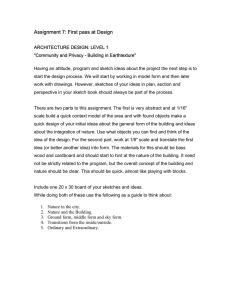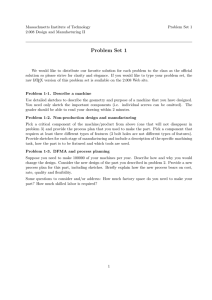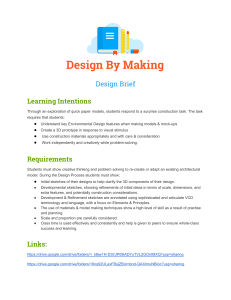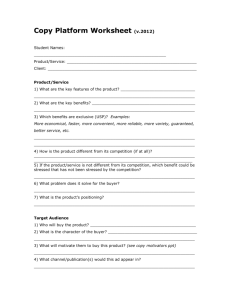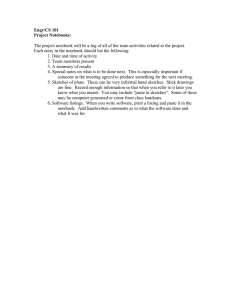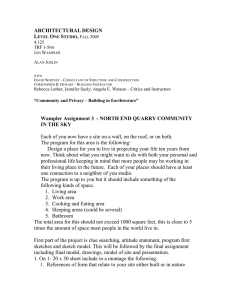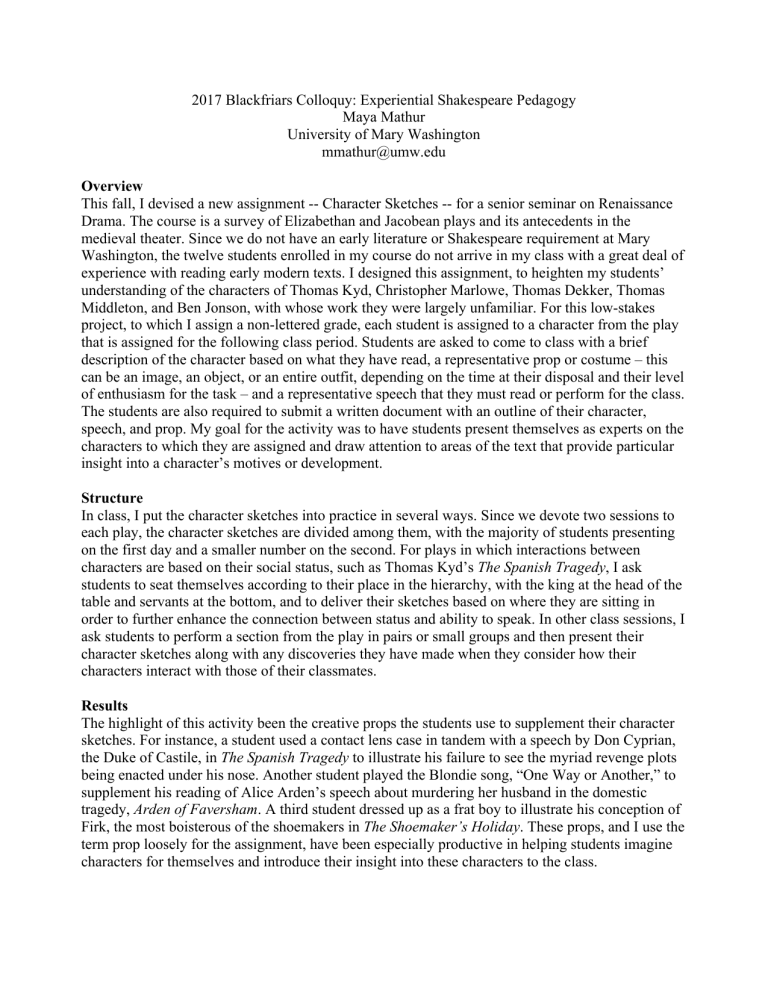
2017 Blackfriars Colloquy: Experiential Shakespeare Pedagogy Maya Mathur University of Mary Washington mmathur@umw.edu Overview This fall, I devised a new assignment -- Character Sketches -- for a senior seminar on Renaissance Drama. The course is a survey of Elizabethan and Jacobean plays and its antecedents in the medieval theater. Since we do not have an early literature or Shakespeare requirement at Mary Washington, the twelve students enrolled in my course do not arrive in my class with a great deal of experience with reading early modern texts. I designed this assignment, to heighten my students’ understanding of the characters of Thomas Kyd, Christopher Marlowe, Thomas Dekker, Thomas Middleton, and Ben Jonson, with whose work they were largely unfamiliar. For this low-stakes project, to which I assign a non-lettered grade, each student is assigned to a character from the play that is assigned for the following class period. Students are asked to come to class with a brief description of the character based on what they have read, a representative prop or costume – this can be an image, an object, or an entire outfit, depending on the time at their disposal and their level of enthusiasm for the task – and a representative speech that they must read or perform for the class. The students are also required to submit a written document with an outline of their character, speech, and prop. My goal for the activity was to have students present themselves as experts on the characters to which they are assigned and draw attention to areas of the text that provide particular insight into a character’s motives or development. Structure In class, I put the character sketches into practice in several ways. Since we devote two sessions to each play, the character sketches are divided among them, with the majority of students presenting on the first day and a smaller number on the second. For plays in which interactions between characters are based on their social status, such as Thomas Kyd’s The Spanish Tragedy, I ask students to seat themselves according to their place in the hierarchy, with the king at the head of the table and servants at the bottom, and to deliver their sketches based on where they are sitting in order to further enhance the connection between status and ability to speak. In other class sessions, I ask students to perform a section from the play in pairs or small groups and then present their character sketches along with any discoveries they have made when they consider how their characters interact with those of their classmates. Results The highlight of this activity been the creative props the students use to supplement their character sketches. For instance, a student used a contact lens case in tandem with a speech by Don Cyprian, the Duke of Castile, in The Spanish Tragedy to illustrate his failure to see the myriad revenge plots being enacted under his nose. Another student played the Blondie song, “One Way or Another,” to supplement his reading of Alice Arden’s speech about murdering her husband in the domestic tragedy, Arden of Faversham. A third student dressed up as a frat boy to illustrate his conception of Firk, the most boisterous of the shoemakers in The Shoemaker’s Holiday. These props, and I use the term prop loosely for the assignment, have been especially productive in helping students imagine characters for themselves and introduce their insight into these characters to the class.


